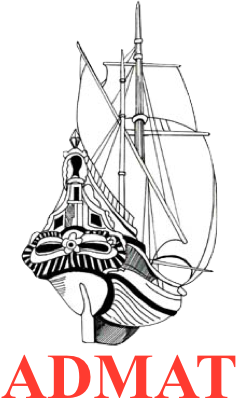ADMAT & ADMAT USA Invited To Present At The NOAA Maritime Heritage Education Conference
Kathy Schubert, President of ADMAT-USA
The Team during the Field school on The Button Wreck in the Florida Key National Marine Sanctuary in August 2005.
Click here for a conference flyer
In November 2005, NOAA (National Oceanographic and Atmospheric Administration) sponsored its first-ever Maritime Heritage Education Conference at the Nauticus National Maritime Center in Norfolk, Virginia. This three day conference consisted of lectures and seminars promoting maritime heritage and was attended by educators, marine specialists and archaeologists from all over the country. The subject topics ranged from maritime history, technology and current events, to public education and outreach programs, diving and cultural resources.
Originally Dr Spooner, was asked to present a paper on ADMAT & ADMAT USA work on the Button Wreck. This is a ship which probably wrecked in the Florida Keys in the 1770's and one which was inside ADMAT's Maritime Archaeological Survey Permit area, from NOAA. Unfortunately, Dr. Spooner was unable to go to the conference due to his work in the Dominican Republic for their Government.
Kathy Schubert therefore was the best choice to represented ADMAT USA as a guest speaker at the conference and presented a lecture on the ADMAT 2005 Florida Field School as well as the results of the investigation into The Button Wreck to date. The lecture as well as the conference were very well received, with highlights being the presentation given by the keynote speaker, Dr. Robert Ballard (discoverer of the Titanic), and the dinner cruise around Norfolk.
Shortly after the MHEC conference, Kathy was a guest speaker at the Rancocas Vally Regional High School in New Jersey, speaking to the honours history classes about the conservation of underwater cultural resources. The students were extremely interested in the connection between the cultural remains and U.S. history.


